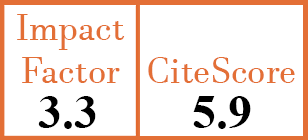Full Papers
Antibodies to periodontogenic bacteria are associated with higher disease activity in lupus patients
H. Bagavant1, M.L. Dunkleberger2, N. Wolska3, M. Sroka4, A. Rasmussen5, I. Adrianto6, C. Montgomery7, K. Sivils8, J.M. Guthridge9, J.A. James10, J.T. Merrill11, U.S. Deshmukh12
- Arthritis and Clinical Immunology, Oklahoma Medical Research Foundation, Oklahoma City, USA. harini-bagavant@omrf.org
- Arthritis and Clinical Immunology, Oklahoma Medical Research Foundation, Oklahoma City, USA.
- Arthritis and Clinical Immunology, Oklahoma Medical Research Foundation, Oklahoma City, USA.
- Arthritis and Clinical Immunology, Oklahoma Medical Research Foundation, Oklahoma City, USA.
- Arthritis and Clinical Immunology, Oklahoma Medical Research Foundation, Oklahoma City, USA.
- Arthritis and Clinical Immunology, Oklahoma Medical Research Foundation, Oklahoma City, USA. Current affiliation: Department of Public Health Sciences, Henry Ford Health System, Detroit, USA.
- Arthritis and Clinical Immunology, Oklahoma Medical Research Foundation, Oklahoma City, USA.
- Arthritis and Clinical Immunology, Oklahoma Medical Research Foundation, Oklahoma City, USA.
- Arthritis and Clinical Immunology, Oklahoma Medical Research Foundation, Oklahoma City, USA.
- Arthritis and Clinical Immunology, Oklahoma Medical Research Foundation, Oklahoma City, USA.
- Arthritis and Clinical Immunology, Oklahoma Medical Research Foundation, Oklahoma City, USA.
- Arthritis and Clinical Immunology, Oklahoma Medical Research Foundation, Oklahoma City, USA.
CER11073
2019 Vol.37, N°1
PI 0106, PF 0111
Full Papers
Free to view
(click on article PDF icon to read the article)
PMID: 29998833 [PubMed]
Received: 02/01/2018
Accepted : 17/04/2018
In Press: 25/06/2018
Published: 18/01/2019
Abstract
OBJECTIVES:
Microbial infections and mucosal dysbiosis influence morbidity in patients with systemic lupus erythematosus (SLE). In the oral cavity, periodontal bacteria and subgingival plaque dysbiosis provide persistent inflammatory stimuli at the mucosal surface. This study was undertaken to evaluate whether exposure to periodontal bacteria influences disease parameters in SLE patients.
METHODS:
Circulating antibodies to specific periodontal bacteria have been used as surrogate markers to determine an ongoing bacterial burden, or as indicators of past exposure to the bacteria. Banked serum samples from SLE patients in the Oklahoma Lupus Cohort were used to measure antibody titres against periodontal pathogens (Aggregatibacter actinomycetemcomitans, Porphyromonas gingivalis, and Treponema denticola) and commensals (Capnocytophaga ochracea, and Streptococcus gordonii) by ELISA. Correlations between anti-bacterial antibodies and different clinical
parameters of SLE including, autoantibodies (anti-dsDNA, anti-SmRNP, anti-SSA/Ro and anti-SSB/La), complement, and disease activity (SLEDAI and BILAG) were studied.
RESULTS:
SLE patients had varying amounts of antibodies to different oral bacteria. The antibody titres against A. actinomycetemcomitans, P. gingivalis, T. denticola, and C. ochracea were higher in patients positive for anti-dsDNA antibodies, and they showed significant correlations with anti-dsDNA titres and reduced levels of complement. Among the periodontal pathogens, only antibodies to A. actinomycetemcomitans were associated with higher disease activity.
CONCLUSIONS:
Our results suggest that exposure to specific pathogenic periodontal bacteria influences disease activity in SLE patients. These findings provide a rationale for assessing and improving periodontal health in SLE patients, as an adjunct to lupus therapies.


